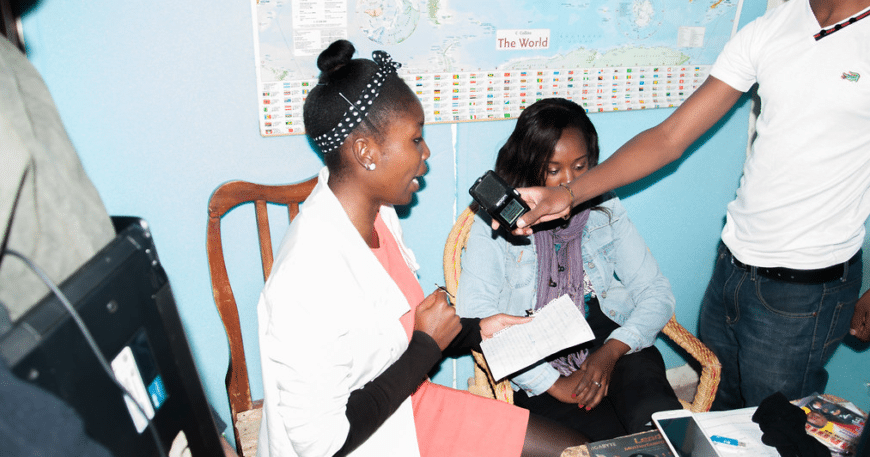Introduction
In 2021, the Media Futures East Africa Project highlighted the underrepresentation of community radio stations in viability assessments, leading to KCOMNET’s initiative to conduct a comprehensive media viability needs assessment targeting 41 community radio stations. This study delves into the key findings and thematic analysis of the assessment, shedding light on the challenges faced by community radio stations in Kenya and offering recommendations for fostering sustainability.
Understanding the Mandate
All 41 participants in the study indicated a clear understanding of the mandate of community radio stations. These mandates encompassed peace-building, empowerment, education, cultural preservation, community development, and holding leaders accountable. Despite facing financial constraints, these stations are committed to providing relevant information and programming to their communities, bridging gaps and fostering social cohesion.
Programming for Marginalized and Special Groups
The study highlighted the importance of programming for Persons With Disabilities (PWD), women, and youth. While many stations actively address issues faced by these groups, there is a call for increased representation within the stations’ staffing ratios. This inclusivity ensures that marginalized groups influence programming decisions, creating content that resonates with their unique perspectives and needs.
Addressing Issues of Refugees, IDPs, and Host Communities
Community radio stations play a crucial role in areas with Internally Displaced Persons (IDPs), refugees, and host communities. By sensitizing host communities, addressing the needs of displaced populations, and fostering interaction, these stations contribute to social and economic harmony. The findings emphasize the need for tailored programs in regions with refugees and IDPs, underscoring the importance of community radio in mitigating social and economic tensions.
Collaboration and Synergy
Collaboration emerged as a critical factor in the viability of community radio stations. While 43% reported limited collaboration with other community media forms, 57% actively engaged with other community radio stations, newsletters, and theatre groups. Establishing partnerships, especially with like-minded organizations, was found to enhance efficiency, reduce operational costs, and strengthen advocacy efforts.
Business Models, Revenue Sources, and Viability
The study revealed that community radio stations face financial challenges threatening their sustainability. Diversified business models, collaboration with partners, and project-based funding are common strategies. However, the economic climate, high inflation, and interest rates pose significant hurdles. Financial literacy and fundraising skills were identified as areas needing improvement, with a call for capacity building to ensure effective financial management.
Impact of Funding Sources on Editorial Independence
Maintaining editorial independence while securing funding is a delicate balance. While most stations reported no constraints, faith-based stations sometimes adhere to specific values, doctrines, and principles, leading to self-censorship on certain controversial topics. Striking a balance between financial viability and editorial autonomy remains a challenge for community radio stations.
Access to Public Information and Digital Literacy
Community radio stations, promoting access to public information, face resistance from local leaders and community members reluctant to share sensitive information. The capacity to utilize digital spaces is hindered by inadequate equipment, limiting the stations’ ability to establish a strong online presence. However, social media was praised for providing an alternative means of engagement and feedback.
Audience Participation and Conclusion
Audience participation levels were generally satisfactory, with various interaction mechanisms allowing communities to engage actively with radio stations. Despite grappling with financial constraints, inadequate infrastructure, and staffing challenges, community radio stations remain vital in providing education, information, and entertainment to communities.
Recommendations for Sustainability
To address these challenges and foster sustainability, community radio stations are urged to:
- Develop and implement business models and business plans.
- Diversify revenue streams by exploring grants, donor funding, sponsorships, and social entrepreneurship.
- Strengthen collaborations with diverse stakeholders for resource-sharing and enhanced advocacy.
- Invest in staff capacity building, especially in radio production, journalism, and financial literacy.
- Enhance digital and online presence to connect with audiences and reduce costs.
- Improve programming creativity, focusing on local content and community needs.
- Invest in infrastructure for effective content production and distribution.
- Advocate for policy and regulatory reforms that recognize the unique role of community radio stations.
- Engage in collaborative learning and benchmarking with other community radio stations.
In conclusion, while challenges exist, the solutions lie within the community media sector. By adopting innovative strategies, fostering collaborations, and prioritizing community needs, community radio stations can overcome hurdles and thrive in their mission to serve and empower local communities



